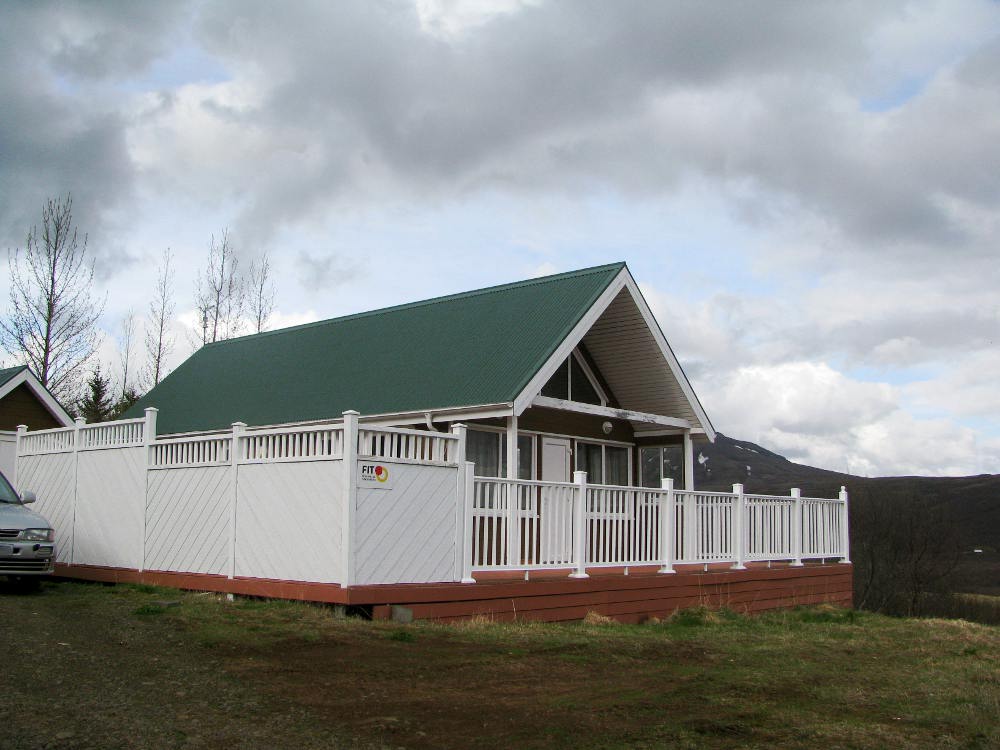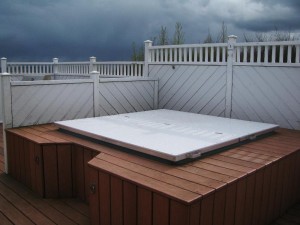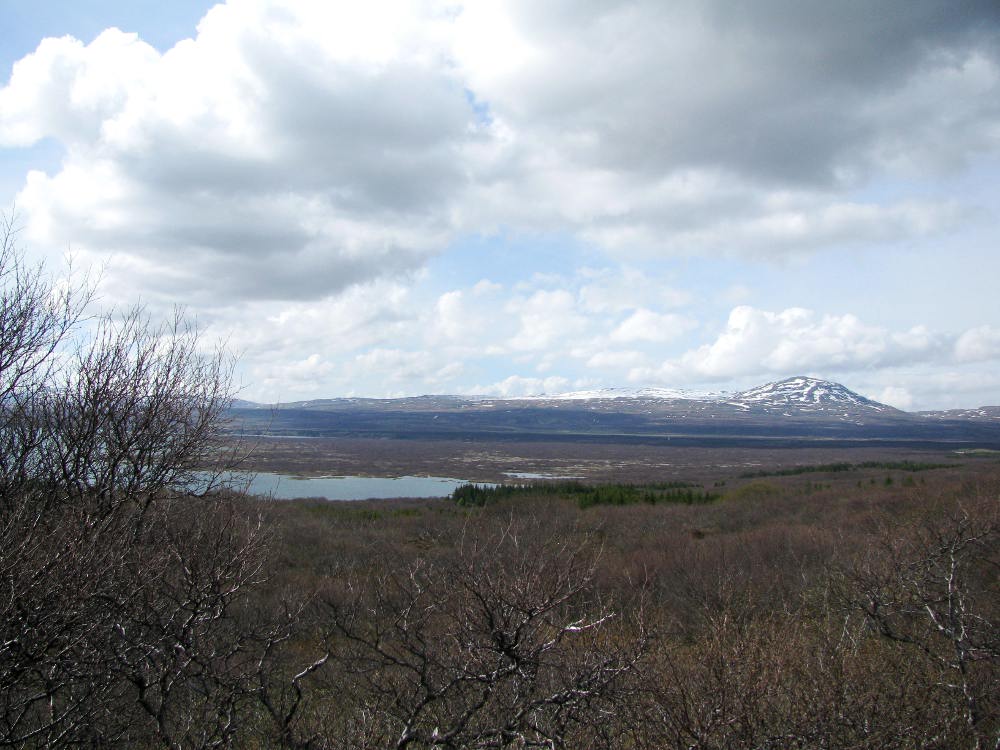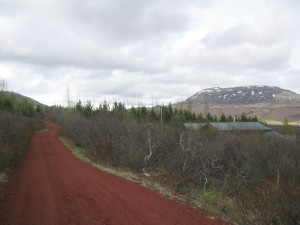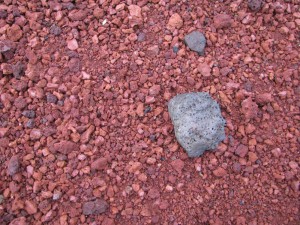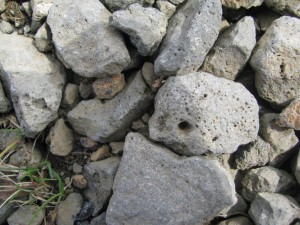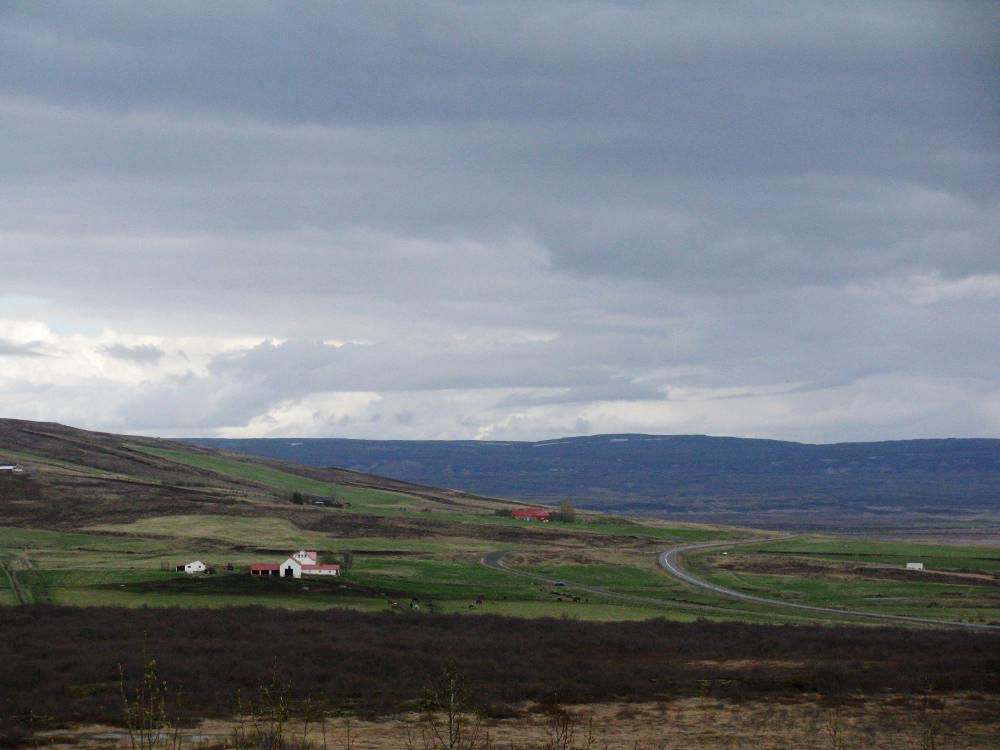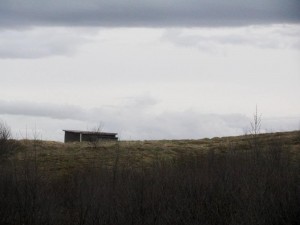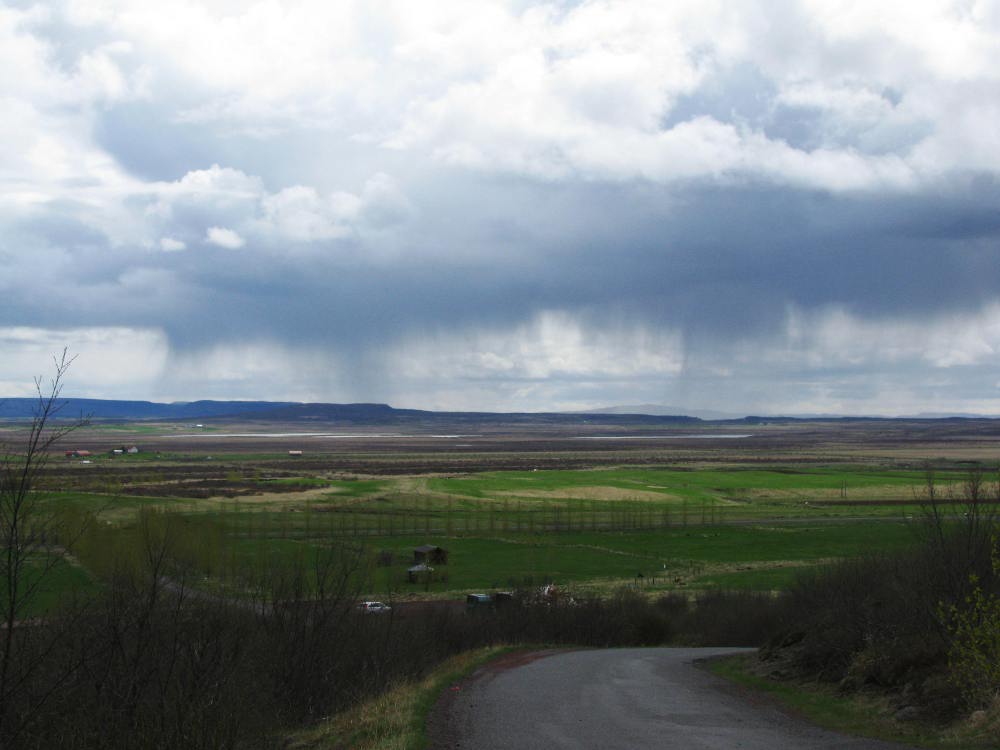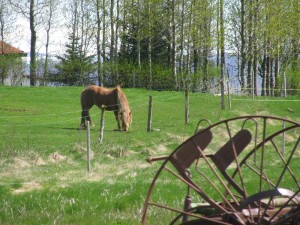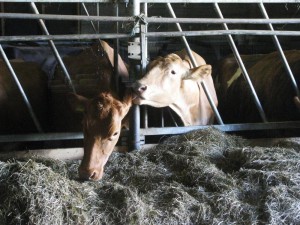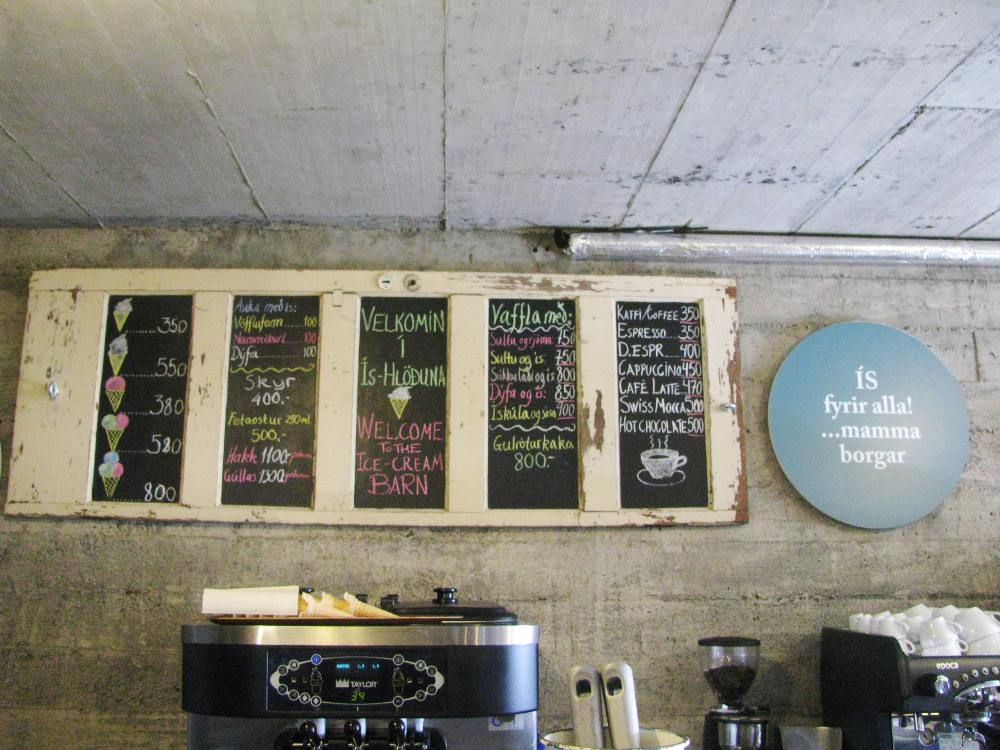Summer house adventure! Posted by hulda on May 21, 2014 in Icelandic culture, Icelandic customs
 Big news! I have handed in my BA thesis! After four years of work and a very harsh thesis-writing spring this called for a celebration so gathering up a group of friends we did what Icelanders would do – we went to a summer house.
Big news! I have handed in my BA thesis! After four years of work and a very harsh thesis-writing spring this called for a celebration so gathering up a group of friends we did what Icelanders would do – we went to a summer house.
When you travel in Iceland you’ll soon train your eye to a certain house type. Small, colourful cabins usually sticking up from a shrubbery, many of them in one place, those are the summer cabins that Icelanders go to relax for a week or just a weekend like we did. Naturally I took a gazillion photos so that’s what’s going to be up ahead – photos of Iceland and stories behind them.
This was the cabin that we rented. It’s located in Úthlíð, one of the areas in south Iceland that’s got summer cabin sites. Like usual the cottages here were situated fairly near each other but you’ll usually not see or hear your neighbours that much for several reasons. One is that Icelanders like to keep to themselves and don’t bother each other as a rule, another is that each cabin is thoroughly fenced around to both provide wind cover and something between your neighbours and –
– you sitting in the hot tub. I’m not even kidding, hot tubs are so popular in Iceland that the cabins usually have one. Even old cabins tend to have a hot tub installed! Hot water is really cheap here so we did spend a good while soaking ourselves in it and aside of the faint egg-like smell I have zero complaints. Icelanders often refer to them as “hot pots” when they speak English because in Icelandic the name is “heitur pottur“, and a word of warning to the foreigners like me… trust that it will indeed be hot. Icelanders love to heat their “hot pots” to a point where getting in is mildly painful. Pools often have rows of “hot pots” of various temperatures by the way, check the red circle on the side for how warm a bath you’re getting in to. The brighter the colour of the circle the redder your skin will be. 😀
Here’s a third reason for why even close neighbours won’t bother your stay. Iceland, especially the south-west, grows thick with dwarf birch. They’ve always been here, according to the current opinion Iceland has never had actual forests but dwarf birch shrubbery covering large parts of the island. It grows so close together and so thick that it’s almost impossible to wade through, but it has given Icelanders one of their favourite jokes:
“What do you do if you get lost in a forest in Iceland?”
“Stand up.”
Another typical feature in the summer cabin areas are the red roads. According to the SO the red gravel used for them is dug out of mountains, but whether it’s actually harvested or just a by-product of something else is still a bit unclear to me.
It’s very soft to walk upon and the granules are tiny, well, at least in comparison to Iceland’s more typical gravel type:
lava rock. It’s used for many purposes both decorative and functional, which means that Iceland’s roads, road side decorations, pavements, and even one staircase outside of the university may look unusually dark and porous to the unaccustomed eye. Gives a whole new meaning to “the ground is lava”!
This is the view that greeted us from out cabin terrace. Not bad I’d say! All that grayish brown is dwarf birch shrubbery and the blue gradient of the scene illustrates well an Icelandic proverb: “Fjarlægðin gerir fjöllin blá og mennina mikla” (= distance makes mountains blue/beautiful and people important).
A little way into the shrubbery, also in clear view from our cottage, stood a tiny, weather-worn shack that has an interesting story, it’s the home of a dead man. A local farmer had wished that his son would build him a house after his death and so he did, it’s been standing there for quite a long time. It may seem a little odd that such a house could be found in the middle of a popular summer house site but that’s just one more thing you better get used to in Iceland: never mind the unexpected. As for our part we can only say our neighbour was quiet and caused no reason to complain.
(Walking past his house as the night approached was a bit eerie though.)
Have you ever seen the rain falling down on a sunny day? I have, and now I have photographed it too. The lack of trees creates a possibility of seeing exactly what kind of weather is heading your way long time before it gets there.
What if you don’t think sitting in a “hot pot” at a cabin all week long is all that great a way to spend time? Then you can just start exploring your surroundings because I assure you there’ll be plenty of things to keep you entertained. Summer cabin areas often have interesting hiking routes available for the interested, horse tours you can book at the main house and possible sites where something historically important has happened. If you’re driving, keep your eyes on the side of the road. Number one reason: there may be sheep looking forward to suddenly lunge themselves in front of your car (you kill it you pay for it is the Icelandic rule in such cases). Number two, you may end up at interesting places such as a farm that serves locally made ice cream!
Here’s who start the ice cream making process. These two seemed to be best friends, constantly grooming each other.
“Ís fyrir alla! …mamma borgar.” (= Ice cream for everyone! …mum’s buying.) Also available were waffles, skyr and coffee. They sold the ice cream in both cones and boxes if you wanted to take some with you and you… you can’t believe how good it tasted. I’m still not entirely over the fact that I’d have to drive for hours to have some more.
Going to a cabin like this is, however, a little difficult unless you already have connections here. Some places like the one we stayed at only allow you to rent them if you belong to a certain workers’ union, and some cabin areas only have private cottages so staying at one was quite an experience for me. I’m positive there are other options available for those who’d like to try the same though, and don’t forget that besides cabins one can stay at a hostel, a bed&breakfast or, if you’d like a cheaper option, a camping site! By the way, many of these options come with a swimming pool and/or a “hot pot” – yes, even the camping sites. 😀
All photos used in this entry are taken by me.

Build vocabulary, practice pronunciation, and more with Transparent Language Online. Available anytime, anywhere, on any device.
About the Author: hulda
Hi, I'm Hulda, originally Finnish but now living in the suburbs of Reykjavík. I'm here to help you in any way I can if you're considering learning Icelandic. Nice to meet you!



